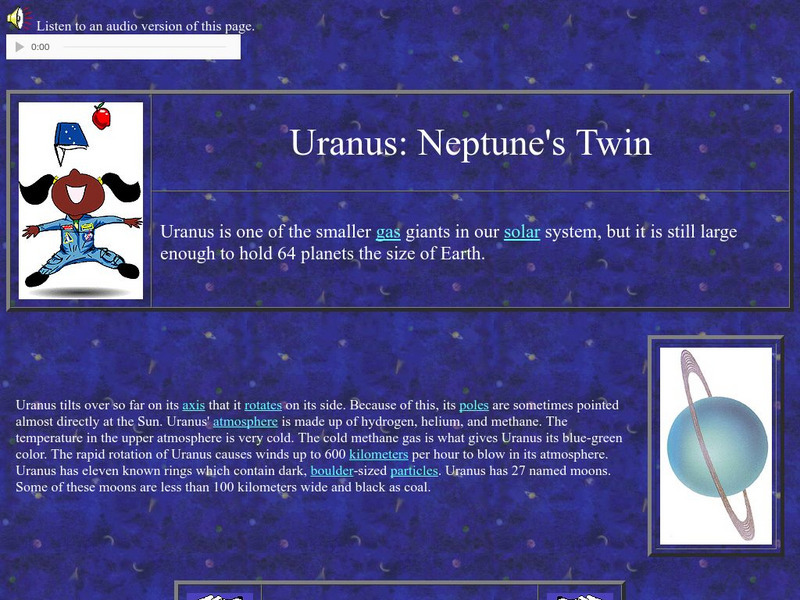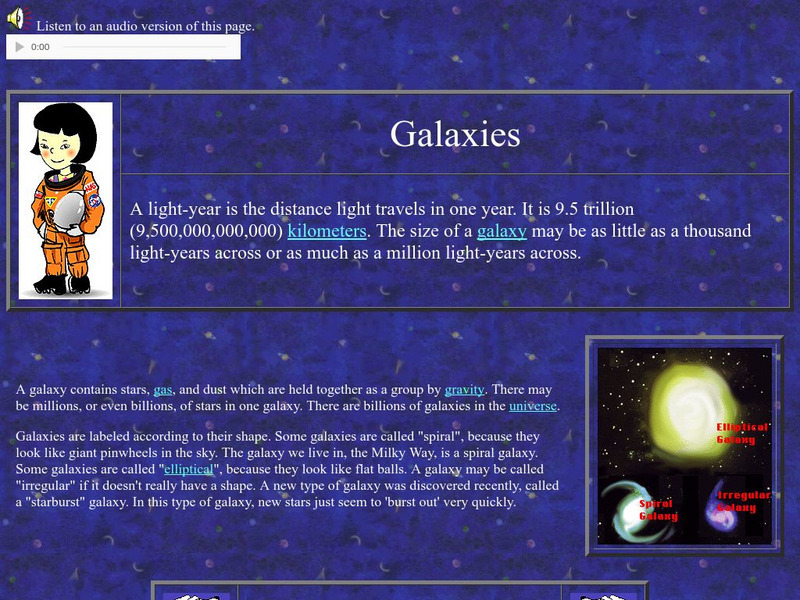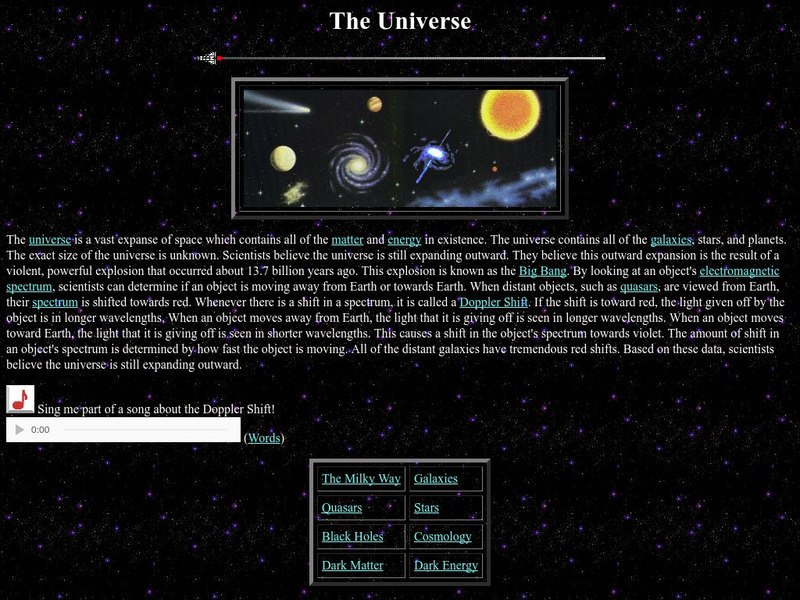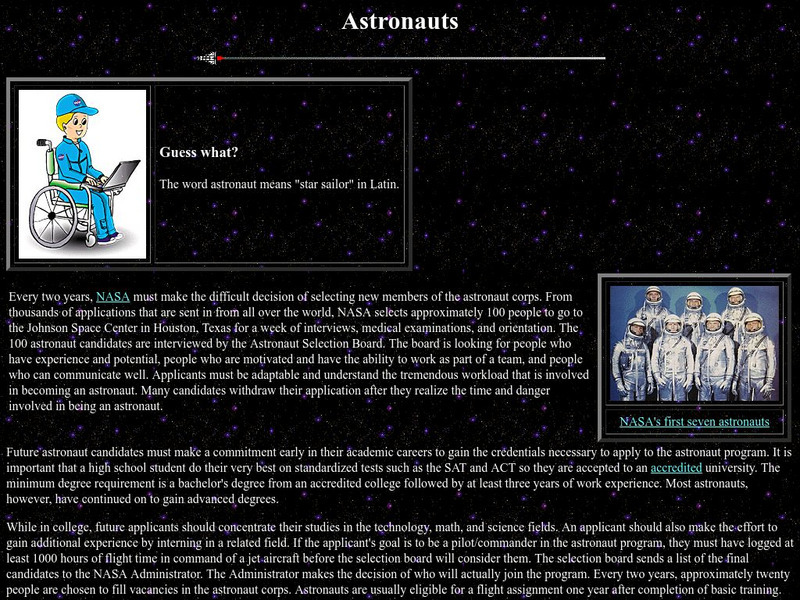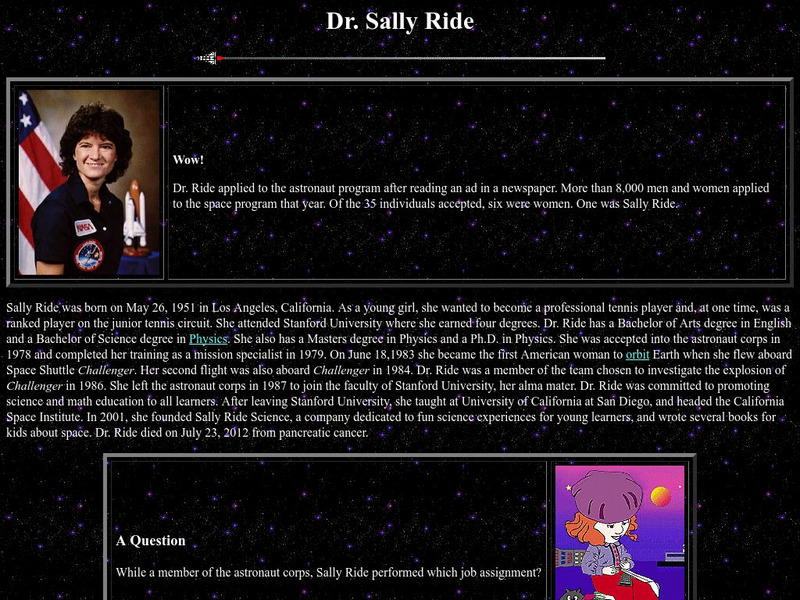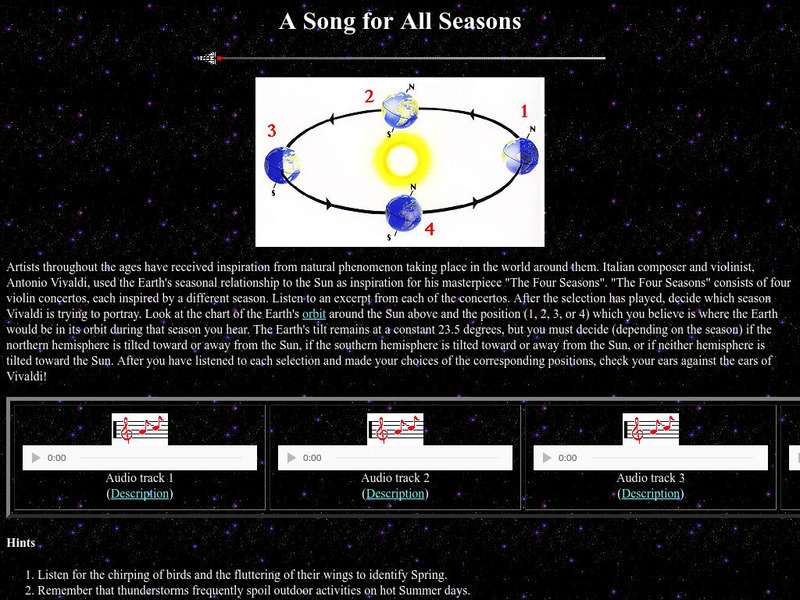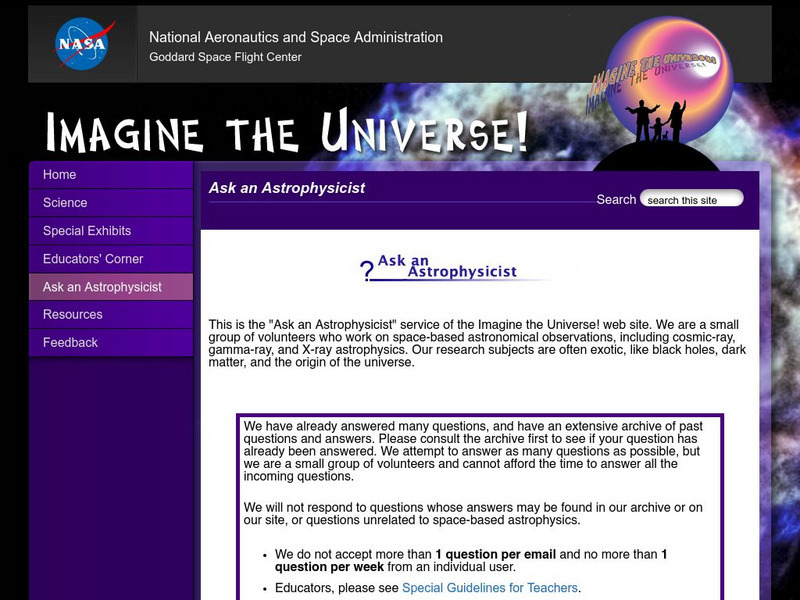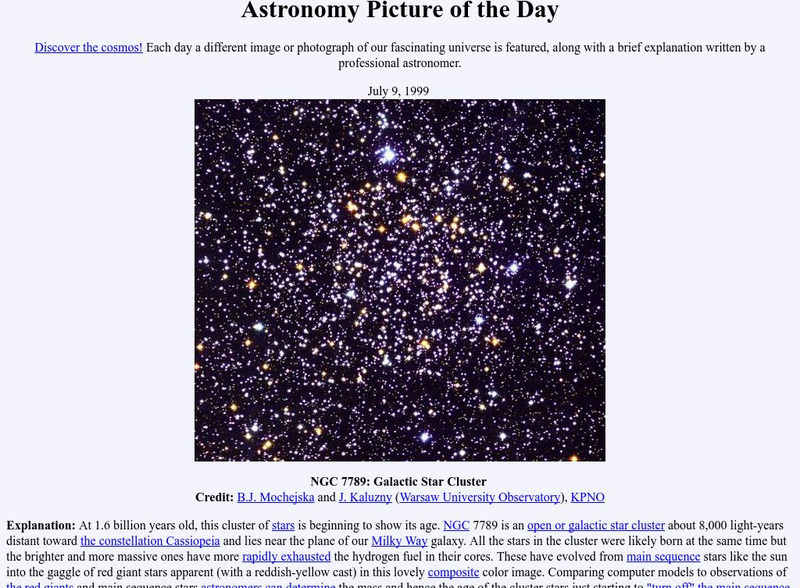NASA
Nasa Star Child: Uranus, Neptune's Twin (Level 1)
Get to know the twin of Neptune with this introduction to Uranus. Listen to the information in an audio file. Features include a printable version of the page, and vocabulary words are linked to a glossary of terms.
NASA
Nasa Star Child: Galaxies (Level 1)
This site provides an introduction to galaxies for the younger student, that is divided into 2 levels of understanding. Find out what type of galaxy looks like a giant pinwheel. Audio content included. Good glossary, and a printable...
NASA
Nasa Star Child: The Universe (Level 2)
This site provides a description of the universe and what it contains. Includes links to definitions, activities, and an audio song. Printable version available.
NASA
Nasa Star Child: Astronauts (Level 2)
This site has a description on what you need to do to become an astronaut. Learn about astronaut training and assignments. Vocabulary words linked to a glossary of terms. Printable version available.
NASA
Nasa Star Child: Space Probes to Mercury
Simple information about the first space explorer to visit Mercury. Good picture of the Mariner 10 probe. Links to a glossary of terms.
NASA
Nasa Star Child: Dr. Sally Ride
Here you can learn all about Sally Ride, the first American woman to orbit Earth. Also, learn a fun trivia fact about Sally Ride!
NASA
Nasa Star Child: A Song for All Seasons
After listening to excerpts from four of the violin concertos from "The Four Seasons" by Italian composer and violinist, Antonio Vivaldi, decide which excerpt was meant to go with which season, and also decide where the earth would be in...
NASA
Nasa Star Child: The Solar System
Discover information about parts of the Solar System, along with definitions just by clicking on highlighted vocabulary terms. Be sure to try the "Solar System Activities" to review the material from these pages.
NASA
Nasa: The Space Place: The Land of the Magic Windows
This is a site from NASA that contains an interesting and fun way to learn about the electromagnetic spectrum. Kate receives a strange riddle from her grandfather. Find out what it says and go through the gateway to the Land of the Magic...
NASA
Nasa: Sea Wi Fs Project: Studying Ocean Color From Space
Five different oceanography topics are addressed by this resource. The first two topics deal with satellite imagery of the oceans and the last three address ecological issues.
NASA
Nasa: Imagine the Universe: Speed of Earth's Rotation
Presents an informative answer to the question "What is the speed of the turning of the Earth?"
NASA
Nasa: Space Place: Make a Topographic Map
Find out what topographic maps are and how to make them. The instructions are complete with pictures to help you construct a mountain of clay and and a corresponding topographic map.
NASA
Nasa: The Space Place: What Is Gravity Really?
What is known about gravity? Find out Einstein's thoughts on gravity in a brief overview of this mysterious force.
NASA
Nasa Earth Observatory: Mystery of the Missing Carbon
This article discusses the mystery of the one to two billion metric tons of missing carbon from the global carbon budget. Scientists do not know where between fifteen and thirty percent of the carbon released each year disappears to, but...
NASA
Nasa Earth Observatory: Modeling Earth's Land Biosphere
Read this article to learn how scientists are using instruments to try and monitor our land biosphere. Scientists have learned two different types of models to help track data from our land.
NASA
Nasa: Imagine the Universe: Black Holes
Resource introduces black holes at two different levels. Take a journey through a black hole, discover what a wormhole is, and discover how we know black holes are there. Includes a quiz on the information presented.
NASA
Nasa: Astronomy Picture of the Day: Giant Stars
Image of a group of red giant stars are seen in an image from the edge of the plane of the Milky Way. The evolution of these stars is explained. Many embedded links contained in the text to related topics.
NASA
Nasa: Imagine the Universe: White Dwarfs
Brief description of white dwarfs with respect to their position in the life cycle of stars, the density of white dwarfs, the emissions of white dwarfs, and the temperatures associated with them.
NASA
Nasa: Weight and Balance Forces Acting on an Airplane
The effects of forces exerted on an airplane wing are discussed both conceptually and mathematically. Illustrations and sample problems and solutions are provided.
NASA
Nasa: Heasarc: What Are Pulsars?
A detailed definition of a pulsar with an explanation of the relationship of pulsars to X-ray astronomy and links to related resources.
NASA
Nasa: Imagine the Universe: Pulsars
Resource explores what a pulsar is, as well as what is currently known about this phenomenon. Content includes a focus on x-ray observations of pulsars, and gamma-ray pulsars.
NASA
Nasa: Wmap: Fate of the Universe
A general look at the expansion of the universe and the Big Bang theory.
NASA
Nasa Star Child: Star Child
StarChild from NASA defines and describes the Solar System in a simple and easy-to-understand manner. The website is broken down into two versions for the student, grade school and junior high.
NASA
Nasa: Electromagnetic Spectrum: Radio Waves
Radio waves have the longest wavelengths in the electromagnetic spectrum. This NASA article discusses AM, FM, TV, cell phone, as well as radio astronomy, which all use this technology.


